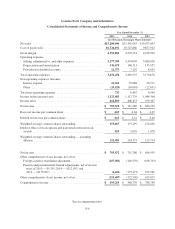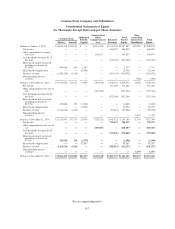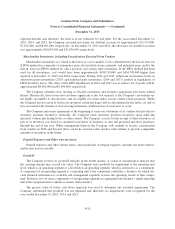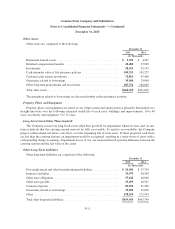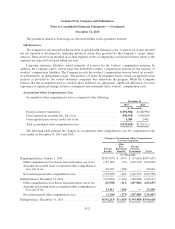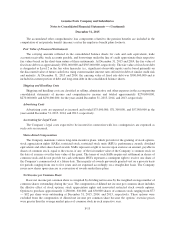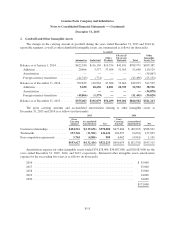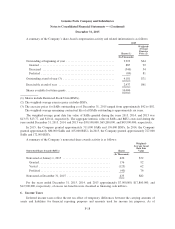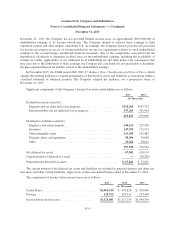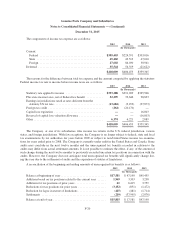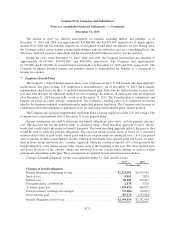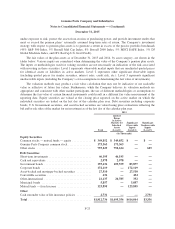Napa Auto Parts 2015 Annual Report Download - page 57
Download and view the complete annual report
Please find page 57 of the 2015 Napa Auto Parts annual report below. You can navigate through the pages in the report by either clicking on the pages listed below, or by using the keyword search tool below to find specific information within the annual report.Genuine Parts Company and Subsidiaries
Notes to Consolidated Financial Statements — (Continued)
December 31, 2015
Recent Accounting Pronouncements
In May 2014, the Financial Accounting Standards Board (“FASB”) issued Accounting Standards Update
(“ASU”) No. 2014-9, Revenue from Contracts with Customers (“ASU 2014-9”), which creates a single, compre-
hensive revenue recognition model for all contracts with customers. The updated standard requires an entity to
recognize revenue to reflect the transfer of promised goods or services to customers at an amount that the entity
expects to be entitled to in exchange for those goods and services. ASU 2014-9 may be adopted either retro-
spectively or on a modified retrospective basis whereby the new standard would be applied to new contracts and
existing contracts with remaining performance obligations as of the effective date, with a cumulative catch-up
adjustment recorded to beginning retained earnings at the effective date for existing contracts with remaining
performance obligations. In August 2015, the FASB issued ASU No. 2015-14, Revenue from Contracts with
Customers (Topic 606): Deferral of the Effective Date, that deferred the effective date by one year to
December 15, 2017 for interim and annual reporting periods beginning after that date. The FASB permitted early
adoption of the standard, but not before the original effective date of December 15, 2016. The Company is cur-
rently evaluating the impact of ASU 2014-9 on the Company’s consolidated financial statements and related dis-
closures.
In February 2015, the FASB issued ASU 2015-02, Consolidation (Topic 810): Amendments to the Con-
solidation Analysis (“ASU 2015-02”). ASU 2015-02 amends the consolidation requirements and significantly
changes the consolidation analysis required. ASU 2015-02 requires management to reevaluate all legal entities
under a revised consolidation model to specifically (i) modify the evaluation of whether limited partnership and
similar legal entities are variable interest entities (“VIEs”), (ii) eliminate the presumption that a general partner
should consolidate a limited partnership, (iii) affect the consolidation analysis of reporting entities that are
involved with VIEs particularly those that have fee arrangements and related party relationships, and (iv) provide
a scope exception from consolidation guidance for reporting entities with interests in legal entities that are
required to comply with or operate in accordance with requirements that are similar to those in Rule 2a-7 of the
Investment Act of 1940 for registered money market funds. ASU 2015-02 will be effective for the Company’s
interim and annual periods beginning after December 15, 2015. The adoption of ASU 2015-02 is not expected to
have a material effect on the Company’s consolidated financial statements and related disclosures.
In November 2015, the FASB issued ASU 2015-17, Balance Sheet Classification of Deferred Taxes, which
amends the existing guidance to require presentation of deferred tax assets and liabilities as noncurrent within a
balance sheet. This guidance was adopted, on a prospective basis, at December 31, 2015. The adoption did not
have a material impact on the Company’s financial statements.
F-14




